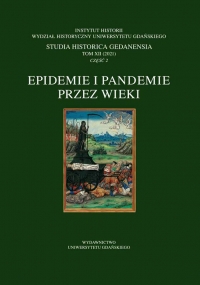Grypa hiszpanka w Szwecji w latach 1918–1919 –
przebieg oraz konsekwencje
Spanish flu in Sweden 1918–1919 – course and consequences
Author(s): Arnold KłonczyńskiSubject(s): History, Social history
Published by: Wydawnictwo Uniwersytetu Jagiellońskiego
Keywords: Spanish influenza; epidemy; Sweden in 1918
Summary/Abstract: Sweden, like many other countries, experienced the effects of the Spanish flu epidemic, which lasted from June 1918 to mid-1919. During this time, 37,000 inhabitants of Sweden died from this strain of influenza. The analysis undertaken relates to how the epidemic and its consequences were dealt with and what the development of the epidemic entailed for Swedish society. The main sources are statistical data showing both the scale of the incidence of this influenza variety and the demographic consequences. Daily press and memoirs were also used. The epidemic occurred in Sweden with varying intensity. It mainly affected people between 20 and 40 years of age. A significant number of victims were seen in the army, which posed a serious threat to state security. The Swedish authorities were not prepared to deal with an influenza epidemic. But they quickly managed to organise temporary care for flu patients. While fighting the epidemic, a number of reforms were introduced (reorganisation of the health service, a new tax system, changes to the welfare system), which led to the creation of the Swedish welfare state model in the following decade. The epidemic also had a trickle-down effect on the democratisation of public life.
Journal: Studia Historica Gedanensia
- Issue Year: 2/2021
- Issue No: 12
- Page Range: 367-382
- Page Count: 16
- Language: Polish

